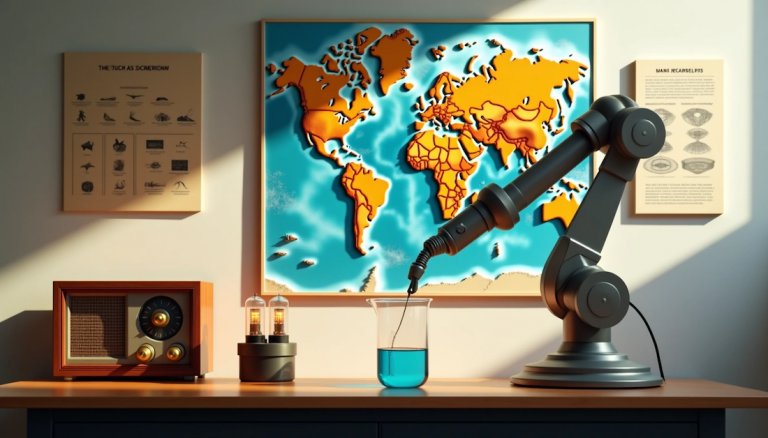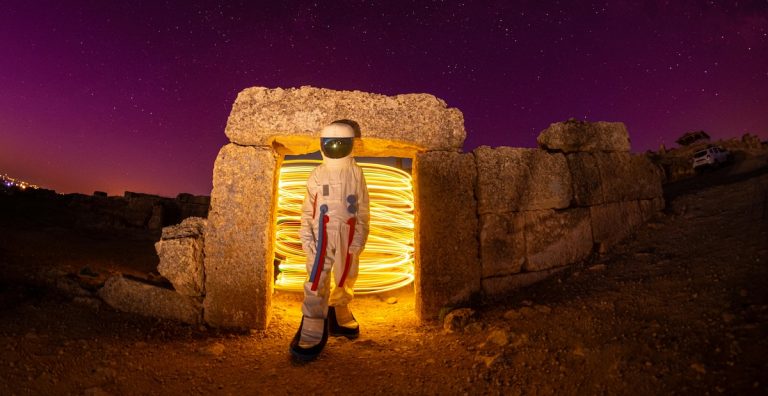Few scientific breakthroughs have reshaped humanity as profoundly as the discovery of the radio signal. What began as a curious experiment with invisible waves in the late 19th century has evolved into the backbone of modern communication — influencing everything from global broadcasting to space exploration. The story of the radio signal is a story of innovation, perseverance, and human curiosity that forever transformed the way we connect.
1. The Birth of Wireless Communication
The origins of radio communication can be traced back to James Clerk Maxwell, who first predicted the existence of electromagnetic waves in the 1860s. Later, in 1888, Heinrich Hertz experimentally proved Maxwell’s theory by generating and detecting radio waves.
However, the world truly changed when Guglielmo Marconi took Hertz’s experiments a step further. In 1895, Marconi transmitted the first wireless signal across a short distance in Italy — and by 1901, he successfully sent the first transatlantic radio signal from Cornwall, England, to Newfoundland, Canada.
That one transmission marked the dawn of the wireless age — showing humanity that information could travel through the air, over oceans, and across continents without wires [1].
2. The Science Behind the Signal
A radio signal is an electromagnetic wave, a form of energy that travels at the speed of light. When an electrical current oscillates in an antenna, it emits waves that can be picked up by another antenna tuned to the same frequency.
This simple mechanism allows radio signals to carry voice, music, data, and even digital information. From AM/FM broadcasts to Wi-Fi and Bluetooth, every wireless communication technology today is a descendant of that early radio innovation.
3. The Era of Radio Revolution
By the early 20th century, radio was no longer just a scientific curiosity — it became a mass communication tool. During World War I, it revolutionized military communication. By the 1920s, the world witnessed the rise of radio broadcasting, turning it into a household necessity.
Families gathered around radios to listen to music, news, and presidential speeches. The radio became the first global media network, bridging people across distances and cultures.
This era also saw the emergence of pioneers like Nikola Tesla, Reginald Fessenden, and Lee de Forest, who refined the technology with audio transmission, vacuum tubes, and modulation techniques.
4. The Signal That Reached the Stars
Radio signals didn’t just change life on Earth — they reached beyond our planet. In 1977, NASA’s Voyager 1 spacecraft began transmitting radio signals back to Earth from deep space, carrying information about the outer planets and even humanity’s message in the form of the Golden Record.
Today, radio signals are the primary medium of communication for satellites, spacecraft, and telescopes, making them fundamental to astronomy and interplanetary exploration [2].
5. The Modern Legacy of Radio
Even in the age of the internet and AI, radio waves remain the core of modern connectivity. Technologies like 5G, GPS, Wi-Fi, and Bluetooth are built on the principles of radio communication.
Every time you stream music, send a text, or navigate via GPS, you’re using the descendants of that original radio signal. It has also given rise to wireless charging, remote sensing, and smart home devices, proving that the signal continues to evolve with human innovation.
6. The Educational Angle: Understanding Radio in STEM Learning
For students, studying the physics of radio signals opens doors to understanding electromagnetism, wave propagation, and energy transfer. These concepts are central in subjects like AP Physics C: Electricity and Magnetism or Engineering Electromagnetics.
Platforms like Kapdec integrate these real-world examples into their STEM programs, helping learners connect theoretical physics to tangible innovations that shape our daily lives.
FAQ’s
What was the “radio signal that changed the world”?
The “radio signal that changed the world” refers to the first successful transmission of a wireless signal by Guglielmo Marconi in 1901. This monumental achievement marked the beginning of global wireless communication. The signal—three short clicks representing the Morse code for the letter “S”—was sent from Poldhu, England, to St. John’s, Newfoundland, Canada, across the Atlantic Ocean. This moment proved that information could travel invisibly through the air over vast distances, revolutionizing communication forever.
Who was Guglielmo Marconi, and why is he important in communication history?
Guglielmo Marconi was an Italian inventor and electrical engineer who pioneered the development of long-distance radio transmission. Often called the “Father of Radio,” his experiments turned the concept of wireless telegraphy into a practical reality. Marconi’s work earned him the Nobel Prize in Physics in 1909 and laid the foundation for technologies like radio broadcasting, radar, and even Wi-Fi. Without Marconi’s innovation, the age of instant communication would have arrived much later.
How did the first transatlantic radio signal impact global communication
Before Marconi’s transmission, communication across continents depended entirely on underwater telegraph cables, which were costly and vulnerable to damage. The ability to send messages wirelessly allowed nations, ships, and military forces to communicate in real-time. This was especially vital during World War I and II, where radio communication became a crucial strategic tool. It also opened the path for commercial broadcasting, global news, and maritime navigation systems.
What scientific principles made Marconi’s achievement possible?
Marconi’s success was built on electromagnetic wave theory, first proposed by James Clerk Maxwell and proven experimentally by Heinrich Hertz. Radio waves are part of the electromagnetic spectrum and can travel through the atmosphere without wires. By using a transmitter, antenna, and receiver, Marconi was able to send modulated electromagnetic signals that carried information across vast distances. The discovery that radio waves could bounce off the ionosphere (a layer of Earth’s upper atmosphere) was also crucial to achieving transatlantic transmission.
What were the immediate real-world applications of the first radio signal?
The initial uses of wireless communication were mostly maritime and military. Ships began using radio transmitters to communicate distress signals, such as the famous SOS message sent by the Titanic in 1912, which saved hundreds of lives. Militaries adopted it for strategic coordination, while news agencies started transmitting updates faster than ever before. Over time, radio evolved into a medium for music, entertainment, education, and public broadcasting, transforming societies worldwide.
How did this discovery influence later technologies like television, Wi-Fi, and mobile phones?
Marconi’s pioneering work formed the foundation for nearly every wireless technology that exists today. Television uses radio frequency waves to transmit images and sound. Wi-Fi and Bluetooth operate using similar principles of short-range wireless communication. Mobile phones rely on radio wave transmission to send data, voice, and video. Essentially, Marconi’s “radio signal” was the spark that led to our modern connected world, where instant communication across the globe is taken for granted.
Were there other scientists involved in developing radio technology?
Yes. While Marconi was the first to commercialize and demonstrate long-distance wireless communication, several other scientists contributed significantly. Nikola Tesla patented many essential components of wireless transmission. Heinrich Hertz discovered radio waves. Oliver Lodge and Alexander Popov conducted early experiments in wireless telegraphy. Marconi’s genius was in combining these scientific insights into a working system that proved radio communication was not just possible but practical.
Why is the first radio signal still considered one of the greatest milestones in human history?
The 1901 transatlantic radio transmission symbolized more than just a technical breakthrough—it represented the unification of the world through communication. For the first time, humans could share information instantly across oceans without physical connections. This invention reshaped politics, commerce, warfare, and culture. It also laid the groundwork for the information age, influencing how we connect, learn, and evolve as a global society. The “radio signal that changed the world” continues to echo in every modern innovation built upon its legacy.
Final Thoughts
The discovery of the radio signal did more than just change communication — it connected humanity in ways previously unimaginable. From Marconi’s first signal to interplanetary communication, radio waves remind us of the boundless reach of human curiosity.
As we move into an age of quantum communication and AI-driven data transfer, the humble radio signal still forms the foundation of our connected world — an invisible thread binding the past, present, and future of human innovation.


